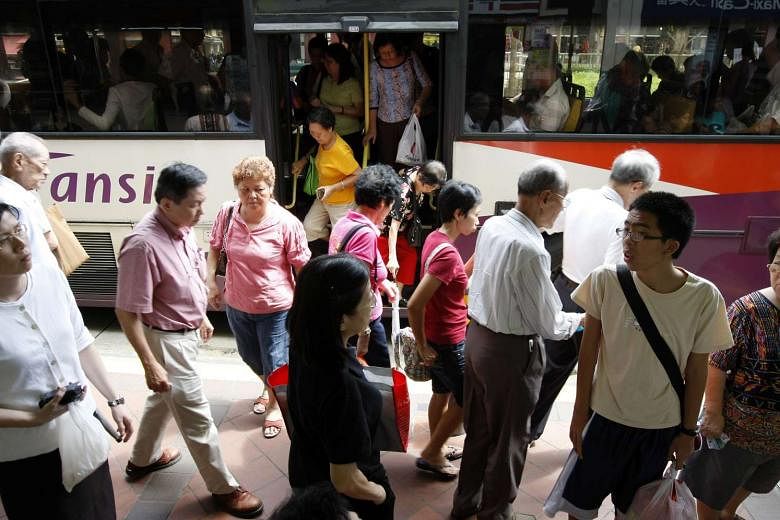When distance-based fares were rolled out in 2010, policymakers expected it to change travelling patterns. But how exactly? Now they know, thanks to a study conducted by the Land Transport Authority (LTA) using a random sample of more than 90,000 ez-link cards.
The findings, published in last November's issue of LTA's Journeys magazine, revealed that commuters made noticeably more transfers - from bus to bus, as well as from bus to train.
This was because with distance fares, there is no longer a fare penalty when a commuter makes transfers to complete his journey.
Two years after distance fares were introduced, the percentage of bus-to-bus journeys went from 10 per cent to 11.7 per cent. Bus-to-rail journeys went up to 22.3 per cent - up from 20.7 per cent.
More interestingly, the number of transfers made along routes where direct services were available also went up - to 6.5 per cent, from 4 per cent.
Senior citizens were more likely to make transfers. Among those who had access to direct services, 9.7 per cent of senior citizen travellers transferred - up from 5.2 per cent. Adult transfers rose from 3.6 per cent to 5.7 per cent. The study found senior citizens made more discretionary trips and thus stood to gain more from the drop in transfer penalties.
It also concluded that commuters were hopping onto other bus services in favour of direct ones that were taking longer to arrive.
It found that 24 per cent of commuters were willing to make transfers that entailed a slightly longer distance in exchange for shorter waiting time.
On average, fares were lower and waiting times shorter. Before distance fares, the average fare for a journey that included a transfer was $1.07. This came down to 94 cents, despite fares being raised in the regular adjustment exercise.
Waiting time shortened to 10.8 minutes, down from 13.6 minutes, possibly because of an overall improvement in bus service quality.
National University of Singapore transport researcher Lee Der- Horng said the findings were "quite expected and intuitive".
He also noted that as the public transport network becomes more comprehensive, transfers would become more necessary.
"That's probably the reason the distance fare was introduced," he said. "Otherwise, people will end up paying more and more."
He added that the change in travel patterns could also have been fuelled by the rail network having grown. The network grew from 159km in 2010 to 183km in 2014.


